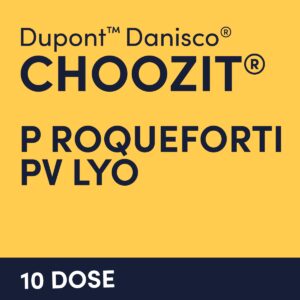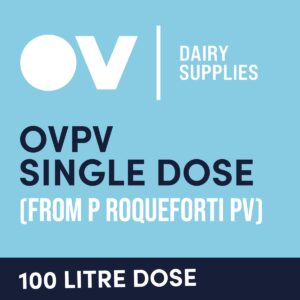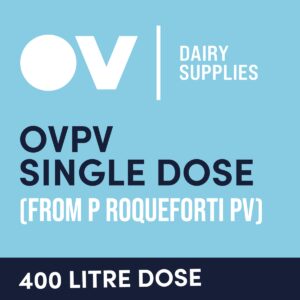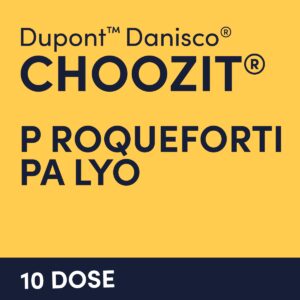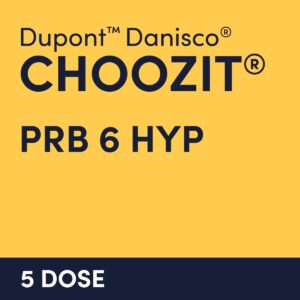Penicillium roqueforti cheese cultures - P ROQ Blue Mould
Favoured for many blue cheeses
Penicillium roqueforti is a common saprotrophic fungus in the genus Penicillium. Penicillium roqueforti is used in the production of blue mould cheeses such as Stilton, Roquefort, Danish Blue and Gorgonzola. Below are descriptions of some of the key subspecies of P, roqueforti.
- PV is a very fast growing blue mould with strong proteolytic and lipolitic activity and strong tolerance to salts. It is ideal for Stilton, Roquefort and strong Gorgonzola and also in the production of vegan blue cheese.
- PA is a very fast growing mould culture with medium proteolytic and lipolitic activity. Cheeses produced with PA have a grey to green marbled interior. Characteristic properties are the very mild, lightly piquant aroma, slightly tough consistency, very little loose moisture and long shelf life. PA can be used alone or in mixtures, e.g. with P. roqueforti PV for mild blue cheeses as well as for blue / white mould cheese type.
- PJ is a fast growing mould culture with low proteolytic and lipolitic activity. Cheeses produced with PJ have a dark blue/green marbled interior. Characteristic properties are a unique flavour, piquant aroma, slightly tough consistency, very little loose moisture and long shelf life.
- PRB6 exhibits a blue green colour. The enzymatic system of PRB6 has two lipases, an alkaline (optimum pH 8.00) and an acidic (optimum pH 6.50). Other characteristics are the strong production of methyl-ketones from fatty acids and ability to grow at low oxygen tension (5%). Note however that good oxygenation stimulates sporulation and colouring.


